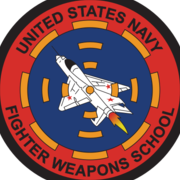-
Similar Content
-
By kosmo92
View File SF2 Top Gun Maverick Menu Screens and Music
SF2 Top Gun Maverick Menu Screens and Music.
19 pieces 1920x1080
4 wav file
Submitter kosmo92 Submitted 04/01/2023 Category Menus
-
By DinoGarner
Hello, Folks!
My upcoming coffee-table book is TOPGUN: The Otherworldly Dreams of a Lifelong Ten Year Old. It features breathtaking images from my flights at TOPGUN, plus units of the Marines, Air Force and Coast Guard. Our colleague, Navy Captain “Heater” Heatley, said, “Pretty cool graphics and layout. Nice pics!” I’d like you and your colleagues and beyond to review an unfinished, first-draft copy my book, fall in love with it, and write testimonials/blurbs, please. The book will be published in early 2023, so you have some time to say yes. I’m also offering all the beautiful aviation images that appear in the book free of charge to air and space museums worldwide in perpetuity. My small way of giving back for inspiration over my lifetime. First, I’m Dino Garner, former scientist, Army Ranger, corporate merc, military aviation photographer, NY Times bestselling ghostwriter and editor of many cool books. Back in the day, I was the only independent civilian photographer to fly in all frontline fighters and attack aircraft of the US Air Force, Navy and Marines, plus helos of the Coast Guard. Had to quit that fun to report for duty as a US Army Airborne Ranger. Modesty aside, I took some stunning images that were on the covers and interiors of Smithsonian Air&Space, Newsweek, Time, US News and World Report, and in dozens of books, newspapers, articles, etc. The final book will be a 550-page coffee-table book that features my military aviation images, plus chapters by prominent people: Foreword by aviation neuropsychologist Dr. David Prewett, “Zatar” by Lt Gen Dave Deptula, Boyword by a 10-year-old boy/student pilot, and Afterword by Dave Senior’s son, Lt Col “Ghost” Deptula. There will also be a special dedication to "Heater" Heatley. This is also unique: I added dozens of candid pix of my fighter pilots and support personnel in scrapbook fashion and added some cool graphics that look like advertisements for the US military fighter aviation. I have spared no expense in the production of this book: it will be printed by the best offset-printing company of high-end books, in South Korea. Heavy, matte art paper interior; cloth hardcover with an added French-fold cover. A draft of the full cover is below. Dimensions: 8.5”H x 11”W x 2.5”D. If you’d like to see the entire book, I can email you a Dropbox link to download the full-color pdf file to view on your computer. It’s too large to view directly on Dropbox. Many thanks for listening. I hope you’ll consider my proposal. Cheers, Dino “Wang” Garner dino@topgun.photography
-
By Viper63a
View File SF2 NorthAtlantic "Top Gun" Themed Hi-Res 1920x1080 Menu Screens and Music!
SF2 NorthAtlantic "Top Gun" Themed Hi-Res 1920x1080 Menu Screens and Music v7
By Viper 05/17/2020
Note: I removed all the nation sounds from this Menu packs for size reasons. If you intend to install the "VIPER63A HQ Menu Sounds" pack, please install that pack first. Installing the HQ Sound pack over the Menu pack may overwrite some of the menu specific music files. You can always re-install this menu pack to get the menu specific theme music back.
I've seen some very nice screens in 1920x1080 mode, so I thought I'd give it try. So here is my "Top Gun" contribution! Special thanks to Homefies and Spectre8750 for their contributions that led me here...
This mod includes custom "Top Gun" themed menu screens, pilots and music. I used the MENU INI files to reuse the music files for different menus. This reduces the size of the package as I don't have duplicates of the same music files for different menus. You should unzip the file and preview the new screens before installing them. I recommend doing this as there are MANY alternate screens I have in there that you might like better.
If you choose to install these screens, I recommend that you back up your FLIGHT, MENU and PILOTDATA folders in the SF2 Mod folder you're installing this mod into. Just in case you want to go back to your original setup.
To install, simply unzip and copy the uncompressed FLIGHT, MENU and PILOTDATA folders to your StrikeFighter2 mod folder.
My StrikeFighter2 mod on Win10 64-bit was..(yours may be different)...
C:\Users\<your_id>\Saved Games\Thirdwire\StrikeFighter2 NorthAtlantic\
Enjoy!
Submitter viper63a Submitted 01/08/2015 Category Menus
-
By Viper63a
SF2 NorthAtlantic "Top Gun" Themed Hi-Res 1920x1080 Menu Screens and Music v7
By Viper 05/17/2020
Note: I removed all the nation sounds from this Menu packs for size reasons. If you intend to install the "VIPER63A HQ Menu Sounds" pack, please install that pack first. Installing the HQ Sound pack over the Menu pack may overwrite some of the menu specific music files. You can always re-install this menu pack to get the menu specific theme music back.
I've seen some very nice screens in 1920x1080 mode, so I thought I'd give it try. So here is my "Top Gun" contribution! Special thanks to Homefies and Spectre8750 for their contributions that led me here...
This mod includes custom "Top Gun" themed menu screens, pilots and music. I used the MENU INI files to reuse the music files for different menus. This reduces the size of the package as I don't have duplicates of the same music files for different menus. You should unzip the file and preview the new screens before installing them. I recommend doing this as there are MANY alternate screens I have in there that you might like better.
If you choose to install these screens, I recommend that you back up your FLIGHT, MENU and PILOTDATA folders in the SF2 Mod folder you're installing this mod into. Just in case you want to go back to your original setup.
To install, simply unzip and copy the uncompressed FLIGHT, MENU and PILOTDATA folders to your StrikeFighter2 mod folder.
My StrikeFighter2 mod on Win10 64-bit was..(yours may be different)...
C:\Users\<your_id>\Saved Games\Thirdwire\StrikeFighter2 NorthAtlantic\
Enjoy!
-




